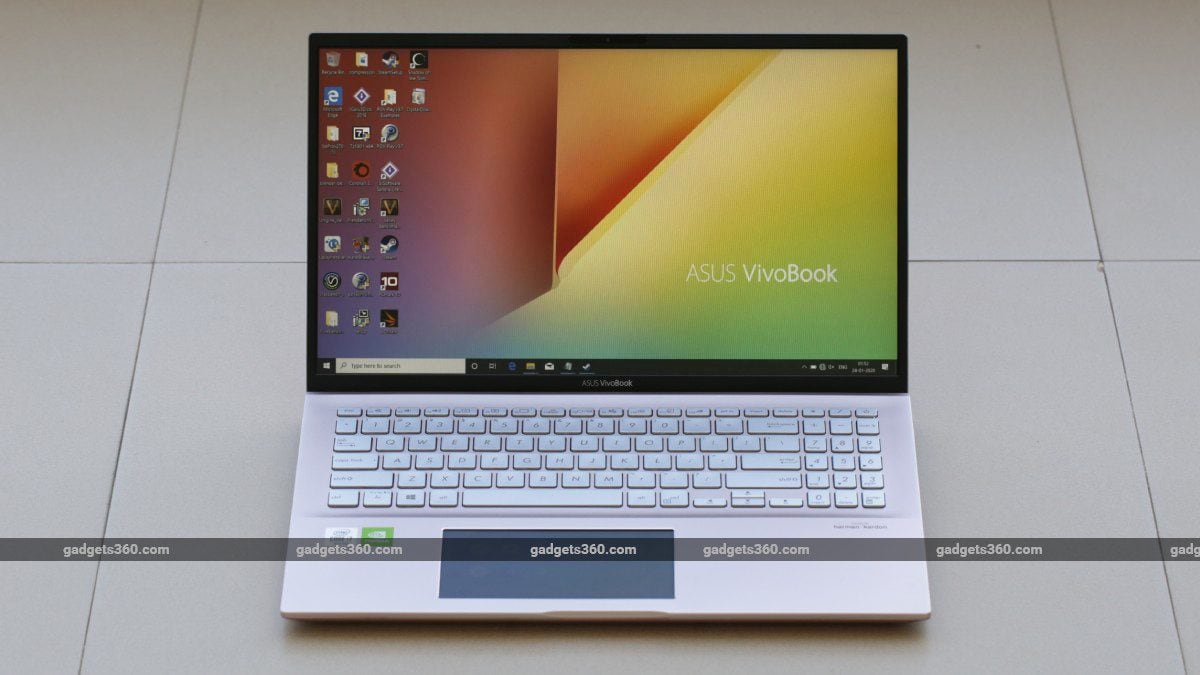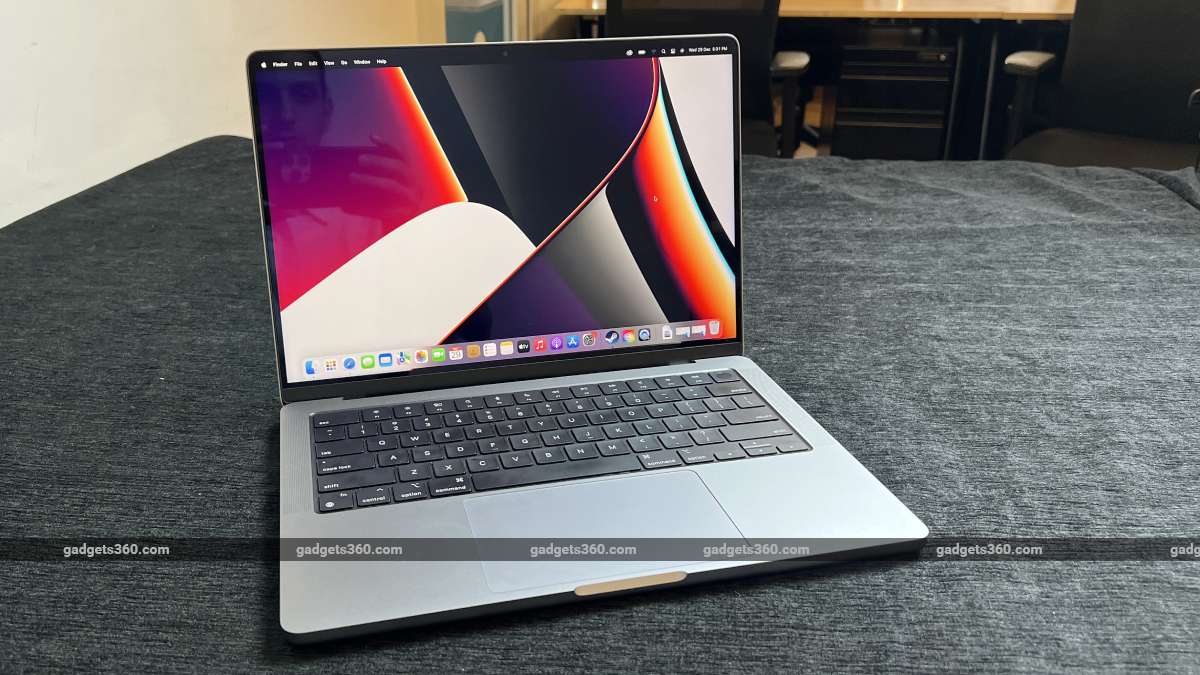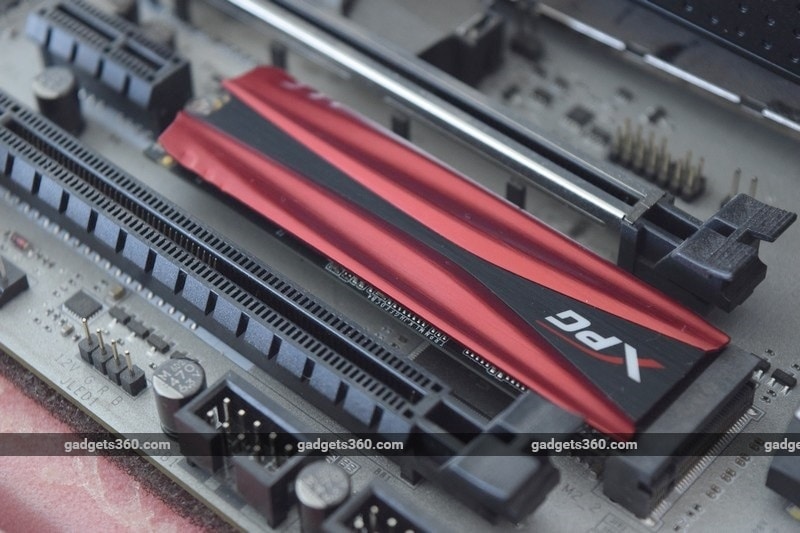Asus took us quite by surprise when it introduced the quirky and unique ScreenPad on its flagship 2018 laptops, the ZenBook Pro 14 and ZenBook Pro 15. The company effectively replaced the standard trackpads on these laptops with fully interactive touchscreens. The idea was to retain all the functionality of a standard trackpad but also open up completely new ways to use a laptop. We had a lot of thoughts about the concept and execution of the ScreenPad idea – not all positive. While there was a lot of potential, it seemed as though Asus had failed to strike the right balance between usability and innovation.
We now have some new laptops with the second-gen ScreenPad, which Asus says has been refined and focused. The concept has also been democratised, and can now be found on mainstream VivoBook as well as premium ZenBook laptops. This could be a good thing, giving Asus a unique and attractive selling point in the crowded market – but it could also backfire, confusing users and making everything more difficult.
To settle that question, we’re reviewing the new Asus VivoBook S15 (S532F), a stylish laptop with the new ScreenPad 2.0 as its main selling point but many other features to boast of as well. Of course we want to know how this hybrid trackpad has improved compared to the first generation, and whether it helps or hurts the laptop. Read on to find out how it all comes together.
![]()
The Punk Pink option is bright and eye-catching, but won’t be to everyone’s taste
Asus VivoBook S15 (S532F) design
The VivoBook S15 is billed as an ultraportable thin-and-light laptop, but it’s still a 15-inch unit which means it isn’t as convenient to carry around as today’s more common 13-inch and 14-inch models. It weighs 1.8kg and is 18mm thick.
Asus is emphasising style with the current VivoBook S series. The VivoBook S15 is available in three striking colours – Moss Green, Punk Pink, and Transparent Silver. While the former two are sure to grab attention with their bright, metallic lids and contrasting trims around the edges of the lids, the silver option is for those who prefer an understated look. We have the Punk Pink version for review, and it would certainly stand out in a crowd. Although the colour is a matter of subjective taste, the look overall with the off-centre Asus VivoBook logo on the lid is very stylish and eye-catching.
The base of the laptop is a light pink, and is offset by silver keyboard keys (and of course the large ScreenPad, which is either lit up as a screen or completely black when turned off). One issue with the colour choices is that it’s very hard to see the markings on the keyboard keys because of low contrast. Unless you’re in a dark room with the backlight on, you might struggle a little.
Asus has brought its “ergolift” hinge design to this laptop segment. When open, the back of the lid rests on your table, and the base of the laptop is raised at an angle. This is said to make typing more ergonomic. We didn’t feel that it made a huge difference to comfort, though it might help with airflow for cooling.
The borders to the sides of the screen are very slim, for a modern look. The top border is still thick enough for a webcam, which we’re okay with. The lid does flex quite a bit but we didn’t see any screen warping as a result. Interestingly, Asus has gone with a matte non-reflective screen rather than a glossy one.
![]()
The ScreenPad replaces a traditional trackpad and takes some getting used to
We found the keyboard layout to be decent – there’s a number pad, which a lot of people will appreciate, and the arrow keys are spaced out which helps deal with the fact that they’re compressed. There’s a convenient shortcut to toggle the Fn lock for the top row so you can choose between the standard Fn key behaviour and quick system shortcuts (but common shortcuts such as Alt+F4 work either way, which is very convenient). We also like the stiff power button which is difficult to press accidentally.
The ScreenPad is so wide that your palms will rest on it while typing. It’s recessed more than trackpads usually are, and also has a very smooth, slick texture. Despite being a fully functioning device in its own right, the entire assembly is clickable, just like a standard trackpad. Design-wise, all this takes some getting used to – as for actual usability, we’ll get to that in a bit.
Unusually, most of the ports are on the right side of this laptop – you have the DC power inlet, an HDMI output, USB 3.1 Gen1 (5Gbps) Type-A and Type-C ports, a 3.5mm combo audio socket, and a microSD card slot. Two USB 2.0 Type-A ports and a charge status LED are on the left. We would have liked a full-sized SD card slot, but the main issue here is the relative lack of fast USB ports – all of them should have been at least USB 3.0.
![]()
Most of the ports are on the right (below), with only two USB 2.0 ports on the left (above)
Asus VivoBook S15 (S532F) specifications and software
The VivoBook S15 with ScreenPad 2.0 has been launched in India in two versions, one with a 10th Gen Core i7-10510U processor and the other with a Core i5-1021U. They sell online for around Rs. 65,990 and Rs. 75,990 respectively, though their official MRPs are higher. These are updates to the versions with 8th Gen CPUs first unveiled at Computex 2019.
Both of these processors are based on Intel’s 14nm Comet Lake architecture, not the more modern 10nm Ice Lake. Our review unit has the Core i7-1015U. This is a quad-core 15W CPU with HyperThreading, and runs at a base speed of 1.8GHz with a boost speed of 4.9GHz.
Asus doesn’t offer any options when it comes to storage, RAM, or other specifications. No matter which CPU you choose, you’ll get 8GB of RAM and a 512GB NVMe SSD. There’s one additional M.2 slot for a second SSD, but note that there’s no 2.5-inch bay for a high-capacity hard drive. Half the RAM is soldered down so you can only swap out the one 4GB module. You’ll need to pop the entire base off this laptop to perform an upgrade.
One interesting touch is the discrete Nvidia GeForce MX250 GPU. This is an extremely basic model and far less powerful than the mainstream GeForce GTX or RTX models, so don’t expect high-end gaming. It’s still better than integrated graphics for basic games and some creative work, though.
The 15.6-inch IPS LCD screen has a standard 1920×1080 resolution, and as we stated earlier, has a non-reflective finish. You get stereo speakers and microphones, and an HD webcam with infrared for face authentication. There’s also Wi-Fi 6 and Bluetooth 5.
The battery capacity is 42Wh and Asus claims that you can charge up to 60 percent in just under 50 minutes, which should come in handy. You get a pretty compact 45W charger in the box, and nothing else is included. The VivoBook S15 can’t be charged through its Type-C port, which is a pity.
Our review unit came with Windows 10 Home and some preloaded software. McAfee LiveSafe bugged us with regular and invasive pop-ups asking us to buy a subscription. MyAsus is a pretty all-encompassing tool with hardware settings and diagnostics, warranty and customer support information, and even an app store. There are some promotional offers, but what’s most interesting is the section for ScreenPad optimised apps. Asus also throws in a few other little utilities for audio and display tweaking.
![]()
You can run apps or any Windows program full-screen on the ScreenPad
Asus VivoBook S15 (S532F) ScreenPad 2.0 usability
The ScreenPad has grown in size and received a major software update since we first saw it on the ZenBook Pro UX580GE. In fact, anyone who bought Asus’ 2018 flagship can update to the ScreenPad 2.0 software for free. Obviously, Asus thinks that its concept has been successful enough to roll out on more models, and it does at the very least give the company something unique to show off.
We complained quite a bit about the confusing and awkward implementation of the original ScreenPad and it’s worth reading our review of it to understand why. Things have definitely improved but there’s still a learning curve.
What you see at first looks much like a smartphone homescreen. The apps that you can run on the ScreenPad include a number pad, a handwriting input panel, and a ‘Quick Key’ panel which basically lets you turn keyboard combinations into one-tap shortcuts. There are also helper apps for Word, Excel, and PowerPoint, which show formatting and contextual tools.
Windows can still recognise the ScreenPad 2.0 as a second monitor, though that isn’t a separate mode anymore. You can drag and drop any app that’s running on the main screen onto the ScreenPad. Asus has developed a clever Windows add-on, so when you start dragging a window, two targets appear on screen. Dropping onto these will either send the window and resize it to fill the ScreenPad, or pin its icon to the homescreen so you can launch it there directly.
The utility of such a small screen is limited, moreso when you need to use the trackpad. Asus now allows users to change the resolution of the ScreenPad between the native 2160×1080, and a more practical (though far less crisp) 1000×500. It would have been nice to have this switch or use scaling on the fly as needed. You can also thankfully use apps just like you would on any other touchscreen – just tap, swipe, and scroll – rather than trying to manipulate a cursor by touch on the same surface. That fixes one of the biggest and most maddening gripes that we had with the original implementation.
You can still wind up with your cursor on the ScreenPad since it is after all a second monitor, but then there’s nothing for it to click on there. Also switching to normal trackpad mode will make all your windows jump to the primary monitor and you can’t get your arrangements back later.
For times when you just need a trackpad and the ScreenPad is displaying something instead, there’s now a quick three-finger tap that instantly gives you a trackpad overlay. However this overlay disappears too quickly after a moment of inactivity, and we couldn’t find a way to make it stick. We’d rather have things the other way around – keeping the trackpad mode on by default and jumping to the apps or second-screen with a gesture.
When you want to use the ScreenPad as a trackpad, you can simply switch it off entirely and use it as normal. If you want both, a swipe upwards reveals a toolbar, and from there you can activate the same trackpad overlay – which then stays in place.
Once or twice during our week with the VivoBook S15, the ScreenPad just froze for a few seconds. We also had a little trouble getting used to the gestures and remembering its range of capabilities, all of which are not explained in the tutorial that kicks off automatically on first use.
All this made us feel as though it would be simpler to just run apps like these on our phone, which is usually lying on the table next to us, than try to multitask with the ScreenPad.If you’re using a large laptop like this with an external mouse, the ScreenPad will probably be more useful.
Clearly, Asus still has some edges to smoothen out, but the ScreenPad experience is a whole lot better than it used to be. We like the fact that this wasn’t just a one-time experiment, and we hope to see continued refinements plus more third-party software support.
![]()
(Clockwise from top left) Microsoft Edge running on the ScreenPad; Microsoft Word shortcuts panel; handwriting recognition panel; window management view
Asus VivoBook S15 (S532F) performance and battery life
The VivoBook S15 is relatively portable despite being larger than most ultrabooks, and you won’t have too much trouble carrying it around or even using it on your lap. We always like matte screens, which don’t constantly have to be adjusted to avoid reflections. We were also happy to note that the laptop never got noisy, even when running heavy tests. The middle and right of the keyboard did get warm when running heavy tests and games but this wasn’t a problem with day-to-day use. The ScreenPad didn’t get warm, except at the very left edge, which is unfortunately where our palm had to rest while typing.
The screen that Asus has used is not the best when it comes to colour reproduction and viewing angles even though it’s an IPS LCD panel. Colours don’t really pop and videos feel a bit dull, which means that entertainment and content creation aren’t really strengths for this laptop. We also had to have the brightness level higher than usual to feel comfortable. On the other hand, we had no problems working with text, browsing the Web, and using common productivity tools.
The speakers are on the bottom, and the maximum volume was surprisingly low. The sound is clean and voices in music and video clips were audible (when we were close enough) but there’s no bass at all. You’ll definitely want a good pair of headphones to use with this laptop.
The keyboard keys are a little mushy, but there’s adequate travel and spacing, so typing isn’t an issue. The biggest usability challenge with this laptop is of course getting used to the ScreenPad, for all the reasons we have described. We wound up just turning it off fairly often.
Coming to overall performance, we of course ran a variety of synthetic benchmarks and real-world tasks. PCMark 10 gave us scores of 3,919 and 3,630 in its standard and extended runs respectively. Cinebench R20 managed 441 in its single-core test and 1,673 in its multi-core test. These are good scores but we have seen better from similarly priced gaming laptops which are of course thicker and heavier.
SSD performance was also reasonably good – CrystalDiskMark 6 measured sequential reads and writes at 1,858.8MBps and 972.9MBps respectively, while the equivalent random speeds were 340.4MBps and 877.8MBps respectively. We’re happy to see an SSD in place of a hard drive though we would have liked one of each at this price.
The GeForce MX250 GPU is good enough for basic games and you might be able to enjoy some high-end titles if you drop the resolution and quality level. We tried running the recent Shadow of the Tomb Raider at 1920×080 using the Low graphics preset with all effects turned off. It actually gave us a decent 25fps average but the minimum dropped as low as 19fps and the real-world experience was choppy. Similarly, we ran Far Cry 5’s built-in benchmark using the same resolution and conditions, and got an average of 26fps with a minimum of 20fps.
We also got scores of 1,201 in the 3DMark Time Spy test and 1,637 in the Fire Strike Extreme test. Our experiences show that while casual games will benefit from this relatively weak GPU, you can only run older games or reduce the resolution and quality settings drastically if you want to run modern ones.
The battery got us through an 8-hour workday during which we didn’t do anything too stressful. The ScreenPad was on for most of that time. We also ran the intensive Battery Eater Pro benchmark with the ScreenPad disabled, and the VivoBook S15 lasted a decent 1 hour, 55 minutes.
![]()
The “Ergolift” hinge raises the rear of the base of the laptop for typing comfort and airflow
Verdict
Asus is trying to push one of its flagship features into more accessible models, and the ScreenPad certainly makes the VivoBook S15 stand out in the premium laptop segment. It’s much improved compared to the first-gen version, but still has some quirks. It doesn’t really have any killer app either – there aren’t any situations that hugely benefit from having it. Still, it’s very cool and it feels futuristic while being much less disruptive than the massive ScreenPad+ second screen on the ZenBook Duo (UX481).
There is no version of this laptop without the ScreenPad, so it won’t work for people who aren’t very comfortable with technology and don’t like when things are unfamiliar. The smaller VivoBook S14 (S431), which is a sibling to this model, does not feature the ScreenPad so it could be an interesting choice if you like everything else about this laptop.
ScreenPad aside, we weren’t too happy with the relative lack of fast USB ports and the average-looking display. However, the VivoBook S15 does have style, core specifications, and portability going for it.
If you’re willing to spend around Rs. 76,000 on a laptop, there are a lot of options – you could get a gaming model with much more powerful hardware, though it would be bigger and heavier. You could get a slick ultraportable or 2-in-1 model, but it wouldn’t have the same balance of portability and features. This is a very mainstream laptop and will work best for basic home, office, and student work, with a bit of entertainment on the side.
Is Poco X2 the new best phone under Rs. 20,000? We discussed this on Orbital, our weekly technology podcast, which you can subscribe to via Apple Podcasts or RSS, download the episode, or just hit the play button below.



